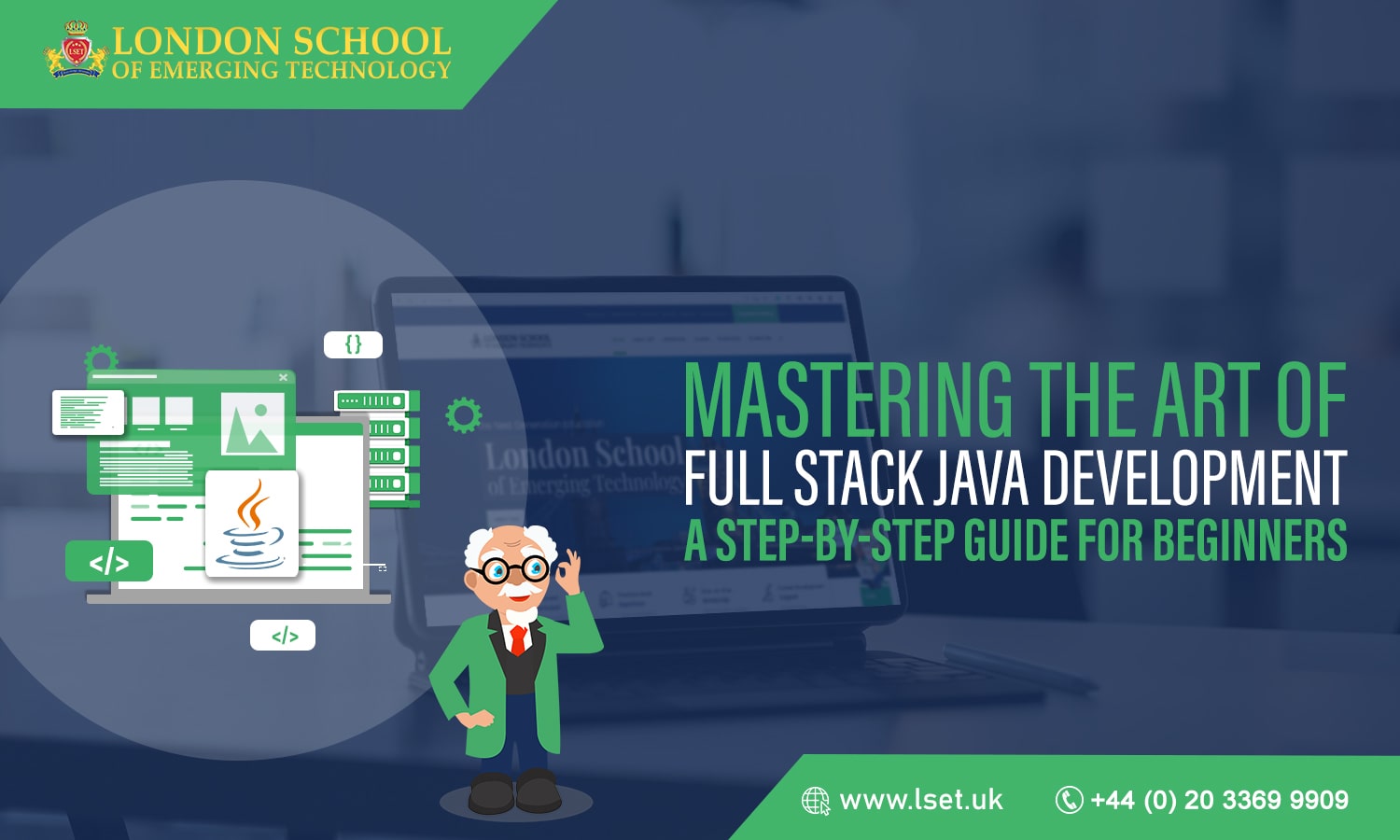Introduction to Full Stack Java Development
Full-stack Java Development is an exciting and in-demand field requiring individuals to understand frontend and backend development using Java programming comprehensively. This comprehensive guide will delve into full-stack Java Development, discuss the benefits of pursuing a career in this field, and provide a roadmap for beginners to master the art of full-stack Java Development.
Benefits of Full Stack Java Development
Full-stack Java Development offers numerous benefits for aspiring developers. First and foremost, it provides a comprehensive view of the entire development process, enabling individuals to engage with both the frontend and backend components of a website or application. This versatility is highly valued in the industry and opens many career opportunities.
Secondly, Java is a widely used and highly popular programming language, particularly in enterprise-level applications. By mastering Full Stack Java Development, individuals can leverage their skills to work on complex and large-scale projects, making them highly sought after by employers.
Frontend Development with Java
Frontend development involves creating a website or application’s user interface and user experience. In Full Stack Java Development, frontend development is typically done using Java Server Pages (JSP), Java Server Faces (JSF), or JavaScript frameworks like Angular or React.
Java Server Pages (JSP) allows developers to integrate Java code within HTML pages. It provides a simple way to generate web content and interact with the backend dynamically.
JavaServer Faces (JSF) is a component-based framework that simplifies front-end development by providing a rich set of reusable UI components. It follows the Model-View-Controller (MVC) architecture and integrates seamlessly with other Java technologies.
Alternatively, developers can use JavaScript frameworks like Angular or React for front-end development. These frameworks offer various features and tools to create interactive and responsive user interfaces.
Backend Development with Java
Backend development involves implementing the logic and functionality of a website or application. In Full Stack Java Development, backend development is typically done using Java Servlets, JavaServer Pages (JSP), or Java web development frameworks like Spring.
Java Servlets are Java classes that extend servers’ capabilities and respond to incoming HTTP requests. They are used to handle business logic, interact with databases, and generate dynamic web content.
JavaServer Pages (JSP) can also be used for backend development in {Full Stack Java} Development. JSP allows developers to embed Java code within HTML pages, making it easy to generate dynamic content and interact with databases.
Additionally, Java web development frameworks like Spring provide a robust and efficient way to build the backend of web applications. These frameworks offer features such as dependency injection, security, and database integration, making development faster and more streamlined.
Database Management in Full Stack Java Development
Database management is a crucial aspect of {full-stack Java} Development. It involves storing, retrieving, and manipulating data in a structured manner. In Java, developers often use Object-Relational Mapping (ORM) frameworks like Hibernate to interact with databases.
Hibernate simplifies database operations by allowing developers to work with Java objects instead of writing complex SQL queries. It handles the mapping between Java objects and database tables, making data retrieval and manipulation seamless and efficient.
Additionally, developers can use Java Database Connectivity (JDBC) to interact directly with databases using SQL queries. JDBC provides a low-level API for database operations and offers flexibility and control over the data access process.
Full Stack Java Development Career Path
A {Full-stack Java} Development career offers immense opportunities for growth and advancement. With a strong frontend and backend development foundation, individuals can pursue various roles such as {Full Stack} Developer, {Java} Developer, Web Developer, or Software Engineer.
Furthermore, {Full Stack Java} Developers are highly valued in the industry due to their versatile skill set and ability to work on complex projects. They can find employment in various sectors, including finance, healthcare, e-commerce, and technology.
Aspiring developers can enrol in comprehensive guides and courses offered by reputable institutions like the London School of Emerging Technology (LSET) to embark on the exciting journey of becoming a {full-stack Java} Developer. LSET offers practical experience in Java web development, expert guidance, and an encouraging learning atmosphere to assist individuals in succeeding in their Stack Java Development career.
Conclusion
Embarking on mastering full-stack Java Development is a rewarding and fulfilling experience for beginners. By acquiring essential skills, comprehension of Java web development frameworks, and hands-on experience, individuals open doors to exciting opportunities in the ever-evolving technology sector. If you’re prepared to dive into the dynamic realm of Full Stack Java Development, enrol today at the London School of Emerging Technology and propel your career to new heights.One-liner: Elevate your career by enrolling in the Full Stack Java Development program at the London School of Emerging Technology, where beginners embark on a rewarding journey, acquiring essential skills and practical experience in the dynamic field of {Java} web {development}.

